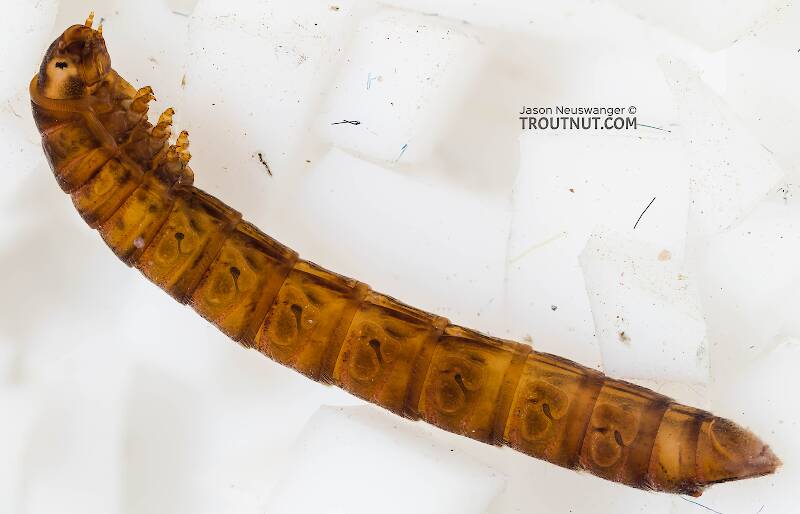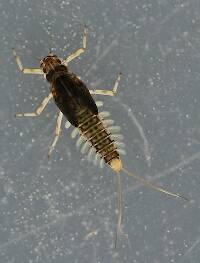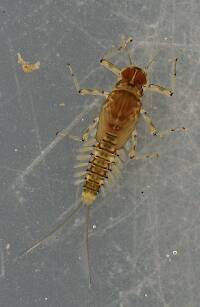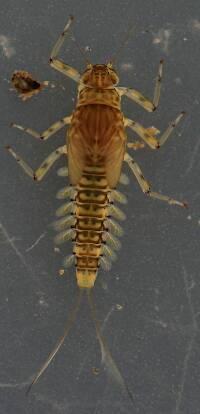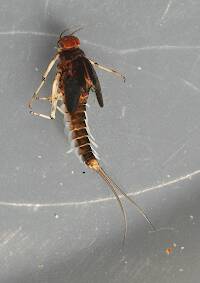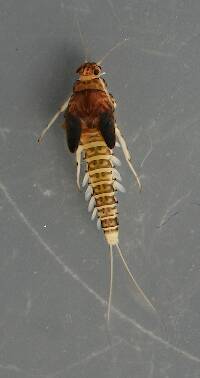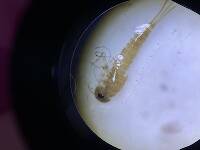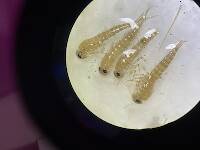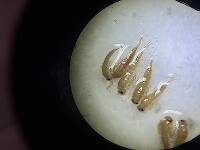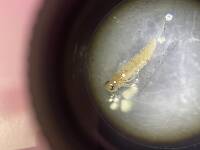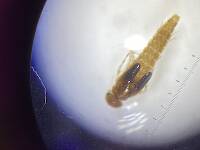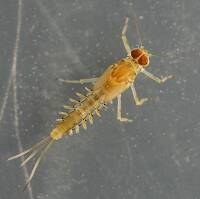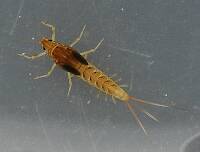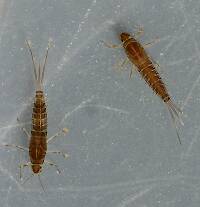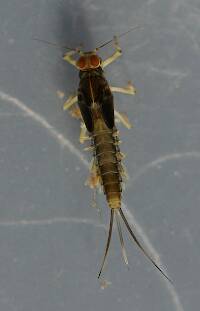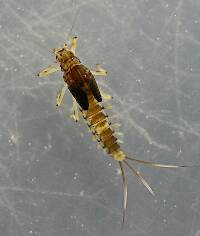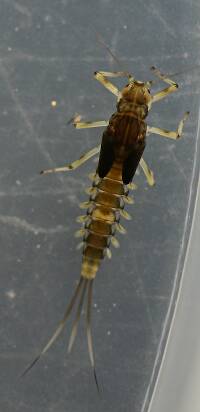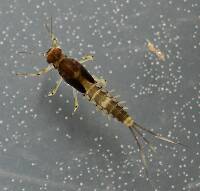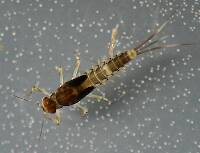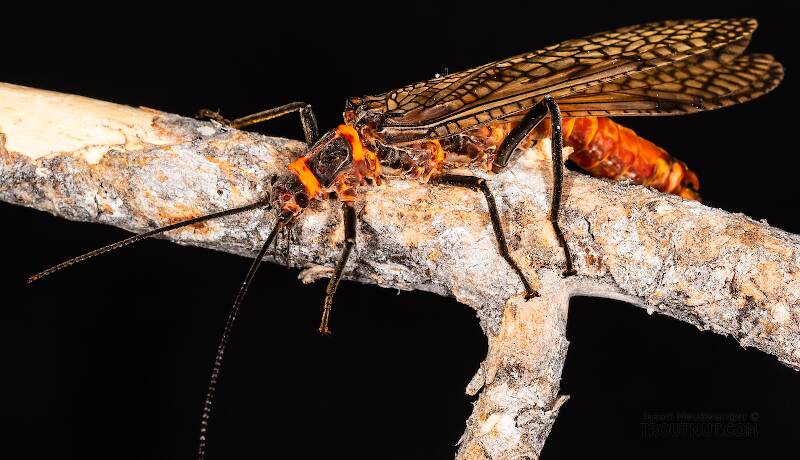
Salmonflies
Pteronarcys californica
The giant Salmonflies of the Western mountains are legendary for their proclivity to elicit consistent dry-fly action and ferocious strikes.
Featured on the forum

Troutnut is a project started in 2003 by salmonid ecologist Jason "Troutnut" Neuswanger to help anglers and
fly tyers unabashedly embrace the entomological side of the sport. Learn more about Troutnut or
support the project for an enhanced experience here.
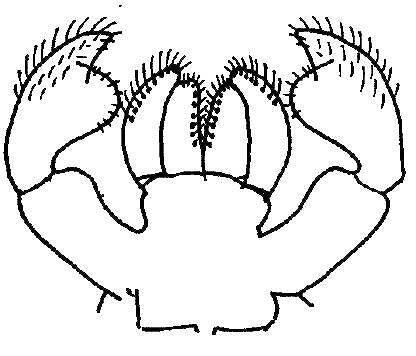
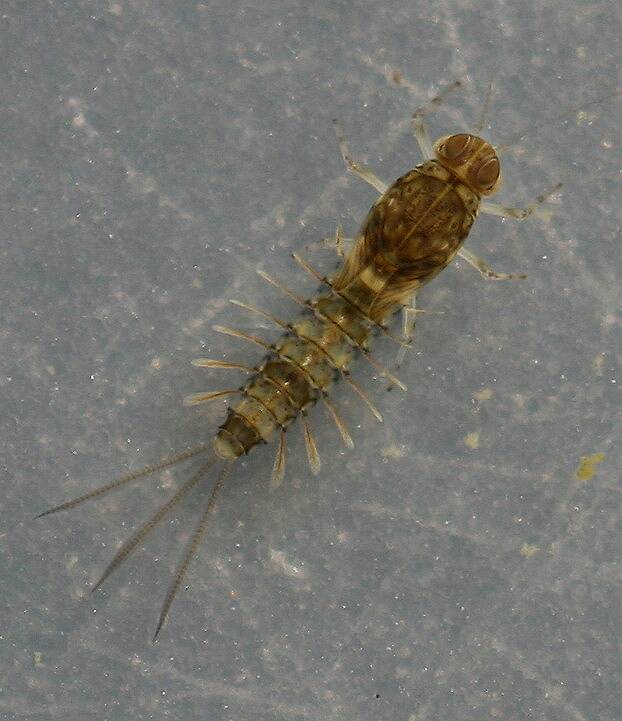

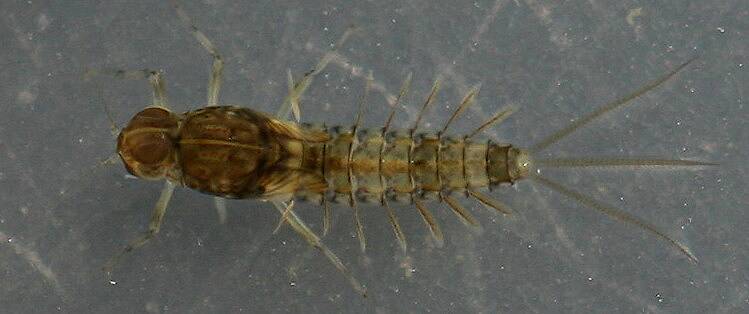
Millcreek on Sep 17, 2015September 17th, 2015, 2:25 pm EDT
These nymphs were identified to genus using Merritt, Cummins and Berg (2008) as well as Buglab's "Key to Western Baetidae". They were keyed to species using Day's "New Genera of Mayflies From California" 1955, http://www.ephemeroptera-galactica.com/pubs/pub_d/pubdayw1955p121.pdf where it is described as Paracloeodes abitus (a synonym of Paracloeodes minutus). These were found in the Russian River, CA.
It's found in warm shallow water with a substrate of small gravel with a medium amount of algae attached. It's usually found in September.
The main ways of telling it apart from the other Baetidae are smaller size (3.5 - 4 mm), the claws being half the length of the tarsi and a labium shaped as shown above.
It's found in warm shallow water with a substrate of small gravel with a medium amount of algae attached. It's usually found in September.
The main ways of telling it apart from the other Baetidae are smaller size (3.5 - 4 mm), the claws being half the length of the tarsi and a labium shaped as shown above.
"If we knew what it was we were doing, it would not be called research, would it?"
-Albert Einstein
-Albert Einstein
Quick Reply
Related Discussions
Topic
Replies
Last Reply
1
Jan 15, 2018
by Millcreek
by Millcreek
11
Apr 24, 2014
by Brookyman
by Brookyman
Re: hook size (and chocolate duns, and old-timey mayfly family classifications)
In Eurylophella Mayfly Nymph by Warren
In Eurylophella Mayfly Nymph by Warren
10
Apr 13, 2007
by Quillgordon
by Quillgordon
8
Jan 7, 2009
by Dgracia
by Dgracia


